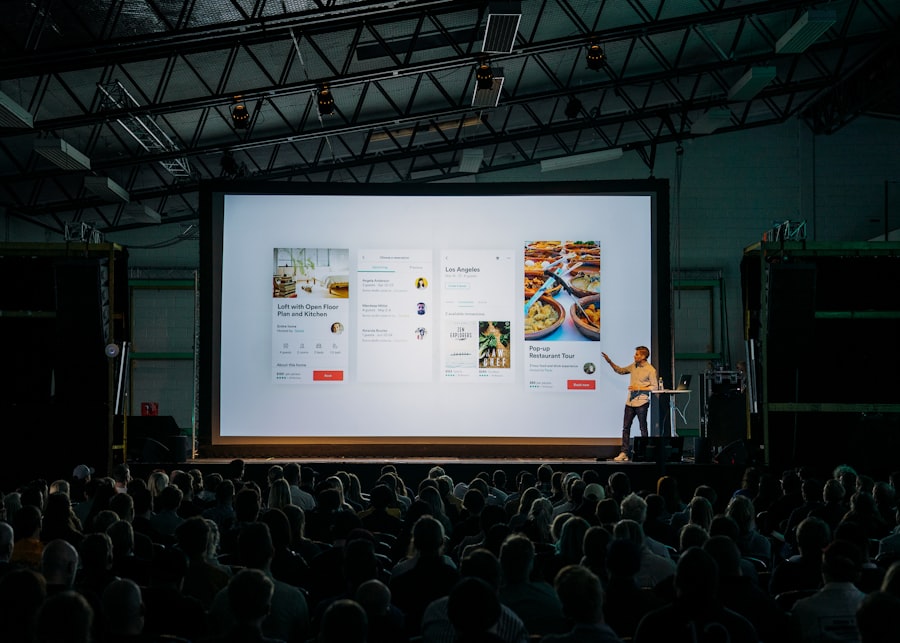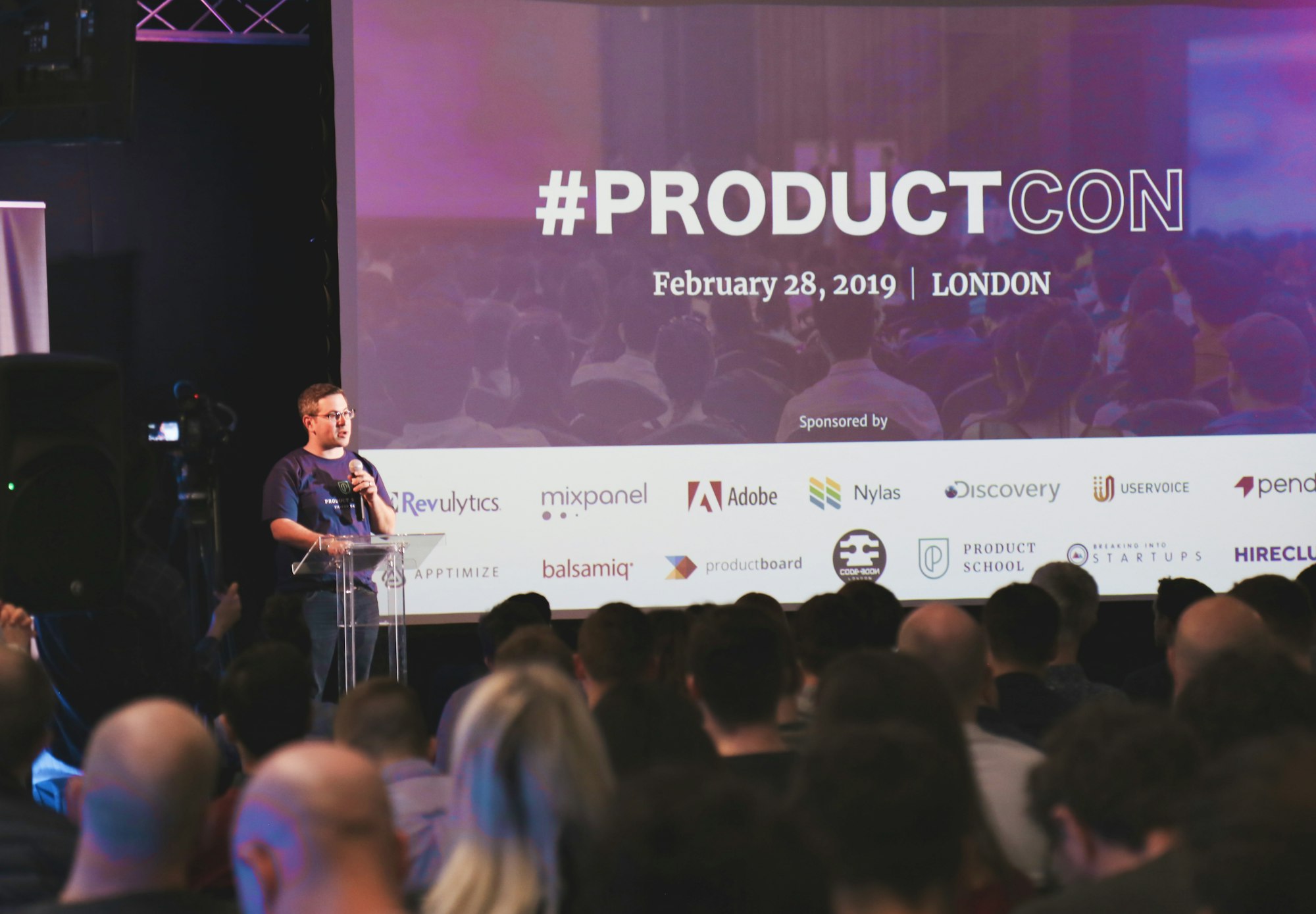The final piece of the speaker puzzle is, in my opinion, also the most important. It can be summed up into three words:
Don't. Be. Boring.
A boring speaker is an ignored speaker, and one who does not get invited back. With a few tips, you can make your presentations far more fun, interactive, and useful to your audience.
Be Interactive!
One of the missteps I often see speakers make is that they stand behind the podium and talk at the audience rather than with them. In essence, they turn their presentation into a lecture.

Let's be real: no one has the ability to pay attention to someone talking at them for an hour. Twenty minutes into a boring lecture and more than half the audience will have either tuned out or left. One of the ways you, as a speaker, can keep their attention is to do more than just stand and shout.
If the setup allows, start by moving around the room more. Walk slowly in front of the audience while delivering your talk, as this gives the audience something to do (e.g. follow you) rather than just sitting there passively listening. Make them engage with you, make them move their heads, and their attention will follow. You don't want to go nuts and sprint from one side to the other (more than once anyway), but walking and talking can do the trick just fine.
You can also turn one of the points from an earlier post on its head and ask your audience questions. I do this all the time in my code-heavy presentations; I will set up a demo and ask "will this work, and why?" More than once has an audience member answered this question and reasoned out something that I didn't even consider, and found a better solution than the one I was going to show. You can make your presentations collaborative by asking the audience questions, and listening to their answers.

A presentation is not a lecture, it is a conversation between you as the presenter and your audience. A lecture is formal, an expert explaining to novices. A technical presentation is informal, a colleague showing how they do something to their peers. By allowing the audience to participate in the conversation, by being an interactive presenter, you simultaneously show that you respect their opinion and want their participation, and in return they will give you their attention.
Chat with the Audience Before You Begin!
One of the tricks I use to get to know my audience is to chat with them before my talk. I'll ask them things like "how many of you are from out of town, like me?" These are simple icebreakers that help the audience get to know me, and vice versa. The key thing is to do this before the talk.
One reason I do this is to make my audience feel more comfortable in this room, at this time, with this random long-haired coder dude that's standing in front of them. I want them to feel like they can participate, that I want to hear their opinions and ideas.

Here are some of the questions I have asked my audience in the past:
- Where is everybody from?
- Is this your first time here at <conference name> (or alternately <city name>)?
- How many of you would consider yourselves programmers? How about testers, or designers, or database engineers, or management?
- What kind of company do you work for? Are you independent, freelance, a consultant, part of a startup? Does your company have 5 employees, 50, 500, 5000, more?
Of course, don't forget to put your own hand up when the answer includes you.
If the audience feels comfortable, they are more likely to interact with us and remember our content, and that is what we speakers want: to have them learn something and participate in the talk.
Don't Introduce Yourself, No One Cares!
Something that I am still working on getting rid of is the seemingly-compulsory "here's my name, who I work for, and what I do" first minute of any given talk. This is, quite frankly, nothing but wasted time. No one cares who you are, they care about what you can teach them.

If you want to introduce yourself, do it while chatting with the audience before the talk. If you don't do this, stick to "Hi, I'm <first name>, and this is my talk <title>". One sentence, a quick intro, no filler. Get to the content, because that's what the audience is here to see.
Be Funny!
Any given talk needs to have some way of remaining interesting to the audience. People do not have the attention span to keep diligent focus on a single thing for an hour. Regardless, a speaker needs a set of ways to keep their audience engaged, and one of the strategies many of us use is to be funny.

Being funny, or at least amusing, helps your audience remain engaged with you and your content. If they're chuckling, they're more likely to be listening next. You don't have to tell outright jokes (though you certainly can), but you should be unexpected.
For example, in one of my talks I discuss how people might help themselves debug their own code. One of the statements I make during that part of the talk is this:
"This will often help you when you are thinking, 'why does my code not work?' Or, in the worst cases, 'why does my code work?'"
Your talk should not be entirely jokes; partially because that's not useful to your audience and partially because it gets boring after a while, defeating the entire purpose. But a few jokes, at the right time and with the right delivery, add a significant kick to your talk.

This takes practice, and failure. You will bomb on stage a LOT before you start getting chuckles. Keep at it, and as long as your topic is well-researched and useful to your audience, they will stick with you long enough to hear your jokes.
(As a recommendation, I would limit the amount of self-deprecating jokes you include. This style is terribly overdone in technical presenting, to the point where some people just sound like they are actually putting themselves down, not making a joke. A few is fine, a lot is asking for people to feel bad and not laugh.)
Be Enthusiastic!
If you take nothing else away from this post, take this. None of the preceding ideas matter if you don't have any enthusiasm for your presentation! Make sure your audience can see that you actually enjoy talking with them about your topic.

Enthusiasm doesn't mean "jump around the room screeching about how awesome X is"; that will most likely get you thrown out of the room, or at least a few sarcastic five-star reviews. Having enthusiasm means that the audience can see how excited you are to present about this awesome tip, trick, architecture, format, pattern, or app.
Part of being enthusiastic is knowing your topic, and part is being excited to share it. That's why we are speakers! We want to share what we have learned with our peers. The trick is to have your audience know and feel that we enjoy talking about this topic, and there are several ways to show that: by being interactive, by being funny, by not wasting our audience's time. By doing these things in concert, we can show our audience that we truly enjoy being here, with them, in this room, at this time, talking about this topic.
Summary
The most important thing for speakers to remember is to not be boring! That's how you get your audience to tune you out. Don't be boring, and still be knowledgeable, communicative, approachable, and respectful, and you have the makings of your next fantastic technical presentation.

Thanks for reading my Improving Your Technical Speaking Skills series! Everyone has it within them to be a great technical speaker, and yes, that includes you. Get started today, and you will see the results for many years to come.
Happy Speaking!










